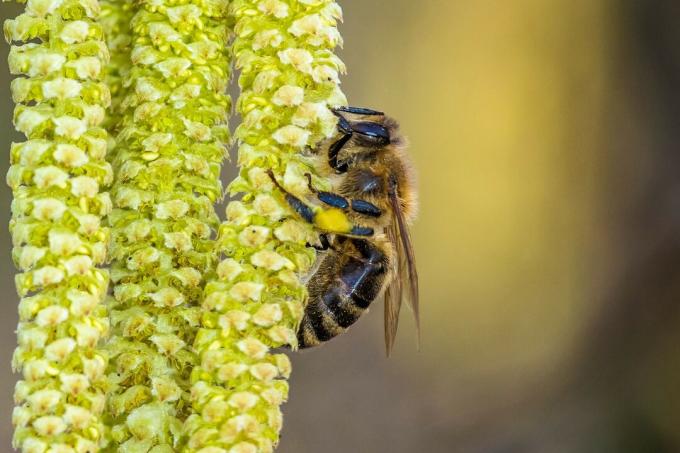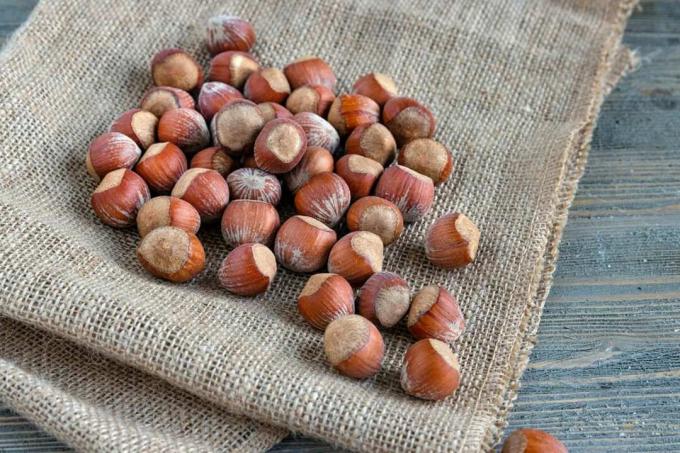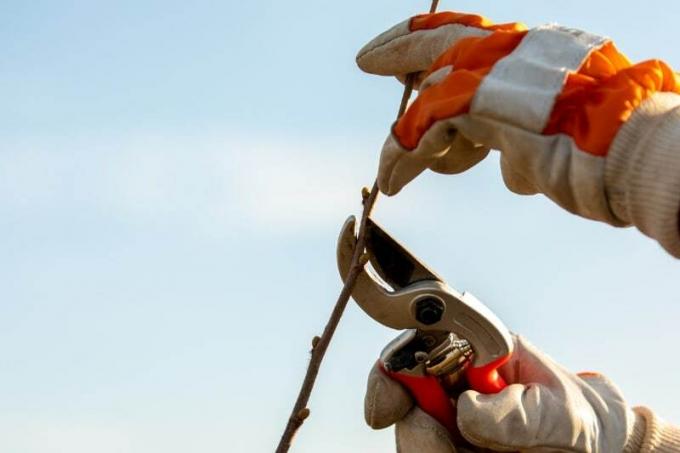
The early flowering of the hazelnut indicates to many people that spring is approaching. However, allergy sufferers are less happy because the pollen can trigger allergies. Find out when the flowering season of the birch tree begins and ends.
In a nutshell
- Flowering time between February and March
- often blooms as early as December/January in mild weather
- Flowering time can extend into April
- Flowers appear well before the leaves sprout
- Flowers easily freeze in late frosts
Table of contents
- When and how long does the hazelnut bloom?
- What factors determine the beginning and end of the flowering period?
- How to distinguish male and female hazelnut flowers?
- frequently asked Questions
When and how long does the hazelnut bloom?

The hazelnut (Corylus avellana), which grows up to six meters high and usually grows like a shrub, is a typical winter bloomer whose flowers appear long before the leaves sprout. The reason for this lies in the type of pollination, because hazelnut blossoms are pollinated by the wind. Nevertheless, many insects fly onto the pollen-rich male flowers, which are particularly popular with wild bees and
bumblebees the first food of the year place. Between January and February, sometimes even in December, the male flowers of the hazelnut bush appear, while the female, inconspicuous hazelnut flowers only appear a little later. Depending on the weather, hazel generally blooms between January and March, although in some years a delayed bloom can extend into April.
A notice: Hazelnuts contain a lot of healthy oil, protein, valuable minerals and vitamins. As an important source of food, the shrub used to be sacred to the Celts and Vikings.
What factors determine the beginning and end of the flowering period?
Hazelnuts used to flower between February and March, but the flowering period has been shifting further and further forward for several decades. In mild winters without frost and snow, the male hazelnut blossoms often appear as early as December or January, thus extending the flowering period by a few weeks. The reason for this can be found in the warmer winter months, especially when the sun is still shining particularly intensely. However, the long flowering period brings with it some problems, because
- Hazelnut blossoms often fall victim to sudden frosts
- often freeze to death in night or late frosts
- deliver flowers that appear too early bees, bumblebees and other insects no longer have any food
Therefore, when planting hazelnut bushes, make sure not to place them in too sheltered and warm locations. Also protect the flowers from frosts, especially towards the end of winter.

Tip: Cut hazel bushes in the winter months, but definitely not during flowering. The best time for this is between October and December.
How to distinguish male and female hazelnut flowers?
Hazelnut bushes are dioecious, so male and female flowers always bloom on one bush. The male, pollen-bearing flowers of the hazelnut appear earlier than the female. They can also be seen more clearly. If a bush only develops flowers of one sex, no pollination can take place - as a result there are no delicious hazelnuts to eat in autumn To harvest.

| male flowers | female flowers |
|---|---|
| hang from the shoots in catkins up to ten centimeters long | inconspicuously hidden in a bud |
| are greenish-yellow in color | recognizable by red scars |
| appear in pairs or in clusters of four | consist only of ovary with scar |
| contain a lot of yellowish ones Bee pollen blown by the wind | do not contain nectar and are therefore of no interest to insects |
| after fertilization develop the fruits surrounded by a bell-shaped shell |
A notice: The hazelnuts available in the supermarket are usually not the fruit of local shrubs, but about the larger fruits of the Lambert's hazel (Corylus maxima) specially cultivated in southern European plantations.
frequently asked Questions
Many people have a moderate to severe allergic reaction to hazelnut pollen. This allergy manifests itself primarily through symptoms such as watery, burning or itchy eyes and swelling of the nasal mucous membranes, which is noticeable through fits of sneezing and a runny nose might.
No, hazelnut blossoms are not poisonous to humans or animals. Only those who are allergic to pollen need to be careful, everyone else does not have to worry. Incidentally, this pollen allergy often occurs together with an allergy to other early flowering trees such as alder and birch.
Although the hazelnut itself is not considered a medicinal plant, teas have been made from its blossoms for thousands of years. According to popular belief, these should have a sweat-inducing effect and therefore help against colds. In years of famine, hazelnut blossoms were also ground and used to extend cereal flours.



